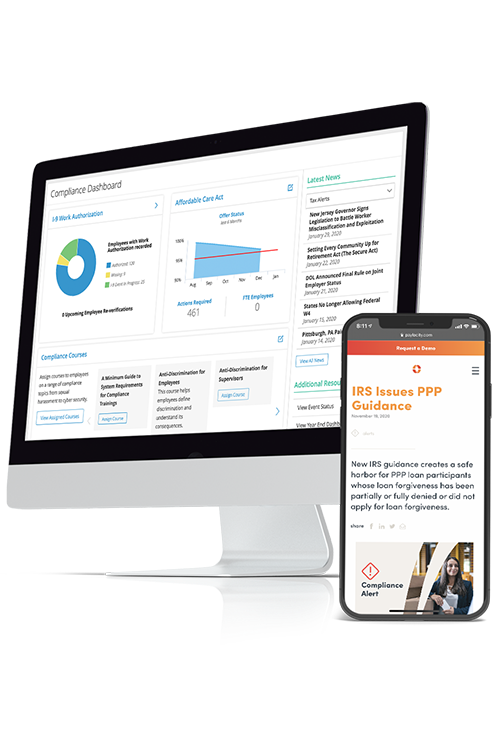What are the Benefits of Employee Compliance Training?
While adhering to compliance training requirements can be a chore, rest assured that your organization can benefit in more ways than one:
- Legal Adherence: Fewer lawsuits and penalties also mean less bad PR and more money to invest elsewhere in the business.
- Improved Workplace Safety: Following health and safety standards means fewer accidents and injuries. Safe workplaces also experience less absenteeism and better employee morale.
- Improved Risk Management: Effective instruction means fewer mistakes due to human error, and it helps avoid oversights and failures that might threaten your business and its customers.
Additionally, compliance training documents your efforts to maintain a healthy work environment. In this way, should the worst happen, you’ll have evidence to prove that you’ve met your compliance requirements.
Compliance Training Examples
As we already discussed, some compliance training is required by law, but there are other types of training that you might want to mandate with an internal policy.
1. Diversity, Equity, Inclusion, and Accessibility
Diversity, equity, inclusion, and accessibility (DEIA) courses aim to reduce prejudice and inequality in the workplace. Its goal is to increase awareness and emphasize the value of a diverse workforce by covering topics like unconscious bias, microaggressions, and conflict resolutions.
This kind of training should foster a more respectful working environment for all members of your team, help staff identify unconscious bias, and actively resolve problem areas.
2. OSHA and Workplace Safety
OSHA compliance is required for all U.S. businesses to help maintain safe workplace environments. Depending on the type of organization and your employees' job duties, you may be required to provide specific types of training to your workforce on a regular basis.
These training requirements range from fire safety to handling hazardous materials or dangerous machinery. OSHA maintains a comprehensive training standards handbook that breaks down the specifics.
Keeping up with required OSHA training doesn’t just help your organization avoid fines. It protects your workforce, too. Remember, your people are your most valuable resource, so keeping them safe while on the job helps safeguard the future of your business.
3. Data Security
Data protection and privacy training is also essential for any team handling sensitive data that could compromise or harm your clients, employees, or business performance if leaked.
Data security training helps prevent breaches by ensuring your workforce follows proper data handling procedures. It also educates your team on how to spot phishing or other malicious attacks before they get into your systems.
Data security training can also help keep your workforce compliant with domestic and international privacy laws that may affect your business. Your organization may be affected by data security regulations like HIPAA, CAN-SPAM Act, or the General Data Privacy Regulation (GDPR). Making sure your workforce understands how to abide by these important privacy regulations can protect your business and your clients.
4. Anti-Harassment
A recent Gallup Poll found 23% of employed adults have experienced violence or harassment in the workplace. Harassment may be sexual, physical, or verbal, and it's sometimes classified as a form of discrimination. These incidents can create lifelong trauma for victims and drag your entire organization through the mud.
Anti-harassment training should, therefore, ensure compliance with local laws and aim to foster a safe and positive work environment. This type of training covers what constitutes harassment, how to recognize it, and what to do if you see these types of behaviors in the workforce.
5. Company Policies and Ethical Behavior
Each organization has its own code of conduct, whether dictated by industry bodies — such as the Department of Health and Human Services (HHS) for healthcare companies — or by companies themselves.
Your organization’s code of conduct must outline policies like dispute resolution, employee conduct expectations, and disciplinary procedures and enforce compliance across the board via training.
6. Disability and 508 Compliance
Federal agencies and contractors are also mandated to comply with Section 508 of the Workforce Rehabilitation Act. This statute requires such organizations to make their electronic and information technology accessible to those with disabilities.
For example, 508 compliance training could help your team build and maintain an accessible company website, including screen readers with descriptive alt text for images and subtitles for videos.
How to Develop a Compliance Training Program
Now that you have a solid grasp on what compliance training is and why your organization needs it, it’s time to develop a compliance training program that checks all the boxes.
1. Identify Your Training Needs
The best place to start is identifying all mandatory compliance regulations for your specific industry and where you conduct business. Every organization will have different requirements, so review all local and federal laws that impact your organization and identify the relevant training topics.
Once you’ve determined which trainings are required by law, consider what you’d like to mandate internally. You may want to provide annual DEIA training or require company policy education for new hires.
As you list out your requirements, think about who at your organization is required to complete these trainings and what the cadence is.




?$Hero-Card$)
